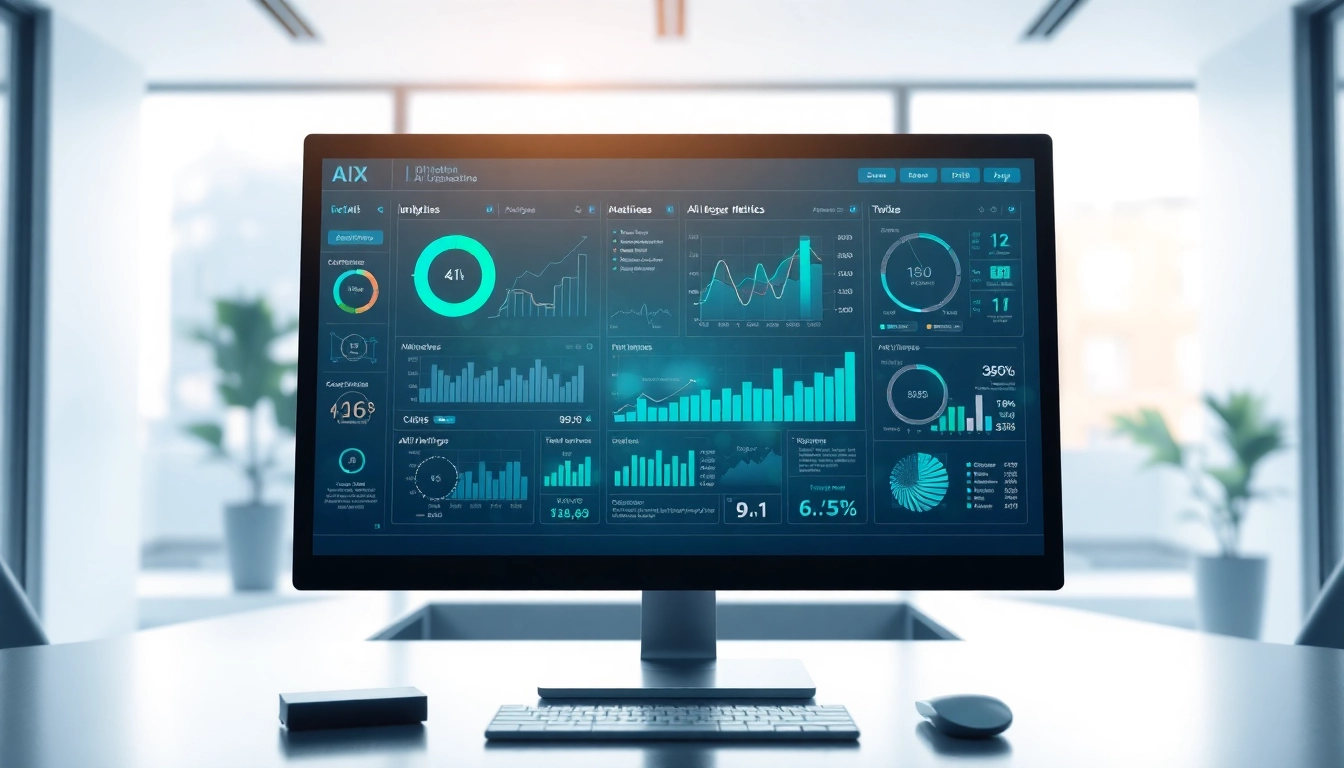Understanding Website Design Fundamentals
In today’s digital age, the significance of effective website design cannot be underestimated. It serves as the backbone of an online presence, influencing user experience, brand identity, and conversion rates. To craft a compelling website, one must first grasp the fundamentals of website design, which encompasses various skills and disciplines in the production and maintenance of websites.
What Is Website Design?
Website design is an interdisciplinary field that combines aesthetics with functionality. It involves the planning and creation of websites, encompassing several elements such as layout, color schemes, typography, images, and interactive features. The ultimate goal of website design is to create an engaging and user-friendly experience for visitors. Understanding this field requires knowledge of graphic design, user interface (UI) design, and user experience (UX) design, making it a complex yet rewarding endeavor.
Key Elements of Effective Website Design
Effective website design is characterized by specific elements that work together to create an optimal user experience. These include:
- Visual Hierarchy: The arrangement of elements to show their importance. This helps guide visitors through the content.
- Color Scheme: Colors evoke emotions and associations. Choosing the right palette can enhance the aesthetics and functionality of a site.
- Typography: The choice of fonts affects readability and enhances the site’s personality. It’s crucial to select typefaces that are clear and align with the brand’s voice.
- Imagery: High-quality images are vital to engaging users. They should be used strategically to support the content rather than overwhelm it.
- Whitespace: Also known as negative space, it helps reduce clutter and highlight important elements, enhancing readability.
Common Challenges in Website Design
While the task of designing a website may seem straightforward, several challenges can arise during the process:
- Balancing Aesthetics and Functionality: Striking the right balance between visual appeal and practical navigation can be difficult.
- Responsive Design: With diverse devices and screen sizes, ensuring that a website functions well across all platforms is essential.
- Loading Speed: Websites must load quickly to retain visitors. Design elements should not compromise performance.
- User Behavior: Understanding what users want and how they interact with a website can be challenging yet critical for success.
- SEO Integration: Designers must also consider how design choices impact search engine visibility.
Effective Strategies for Website Design
To navigate the complexities of website design, implementing effective strategies can lead to the creation of a stunning and functional website. Here are key strategies to consider:
Planning Your Website Design Project
Planning is the first step toward a successful website design project. This phase requires a thorough understanding of the project’s objectives, the target audience, and the structure of the website. Key steps include:
- Define Goals: Clearly outline the objectives of the website, whether they involve increasing sales, generating leads, or promoting a brand.
- Research Target Audience: Understand the preferences, needs, and behaviors of the target audience to tailor the design accordingly.
- Create a Sitemap: A sitemap serves as a blueprint for the website, outlining its structure and pages.
- Wireframing: Create basic layouts to visualize the website’s structure and functionality before detailed design work begins.
Leverage User-Centric Design Principles
User-centric design focuses on the needs and preferences of the site’s visitors. By leveraging this approach, designers can create websites that resonate with users and elevate their experience. Important practices include:
- User Testing: Involve real users in testing the website to gather feedback and identify usability issues.
- Accessibility: Ensure that the site is accessible to all users, including those with disabilities. This can enhance engagement and reach.
- Intuitive Navigation: Structure the navigation menu to allow users to easily find what they seek, enhancing their experience on the site.
Ensuring Responsiveness in Website Design
Responsiveness is critical in website design, as users access sites from various devices. A responsive design adapts to different screen sizes, maintaining functionality and aesthetics. Tips for achieving responsive design include:
- Fluid Grids: Use relative units for layout rather than fixed units to allow flexibility on any screen size.
- Media Queries: Implement CSS techniques that apply different styles based on device characteristics, improving rendering.
- Flexible Images: Optimize images to ensure they scale well without losing quality on smaller screens.
Tools and Resources for Website Design
The right tools and resources can significantly enhance the website design process. Here are essential software and resources designers should consider:
Must-Have Software for Designers
Design software can streamline the creation process, allowing designers to execute complex tasks efficiently. Popular software options include:
- Adobe XD: A powerful tool for UI/UX design that allows for prototyping and collaboration.
- Figma: An intuitive and collaborative design tool that enables real-time co-editing and feedback.
- Sketch: A vector-based tool specifically geared toward digital design, often praised for its user-friendly interface.
Web Design Inspiration Sources
Finding inspiration is fundamental in the design process. Numerous resources can spark creativity and offer new ideas:
- Dribbble: A community for designers to share their work and gain inspiration from others.
- Behance: An online platform to showcase and discover creative work across various fields.
- Awwwards: This site recognizes and promotes exceptional web design, providing valuable insights and examples.
Utilizing Templates and Frameworks for Efficiency
Templates and frameworks can save time and streamline the design process, allowing designers to focus on innovation while following established best practices. Here are common options:
- Bootstrap: A widely-used CSS framework that enables responsive design with pre-defined components.
- WordPress Themes: Pre-designed themes offer branding elements and functionality, making it easier to get started.
- Template Marketplaces: Websites such as ThemeForest allow designers to purchase and customize templates according to their needs.
SEO Best Practices in Website Design
Integrating SEO into website design is essential to optimize visibility and improve search engine rankings. Understanding best practices can greatly enhance performance:
Integrating SEO in Your Website Design
SEO and website design are intertwined; therefore, it is vital to incorporate SEO best practices during the design process. Key considerations include:
- Keyword Research: Aim to integrate relevant keywords into your content, headings, and meta tags without compromising quality.
- Image Optimization: Use descriptive filenames and alt tags for images to enhance search visibility.
- Responsive Design: As discussed, a responsive design is also favored by search engines, improving overall SEO efficacy.
Optimizing Site Structure and Navigation
An organized structure plays a crucial role in enhancing user experience and SEO. Consider the following for effective site navigation:
- Clear Hierarchy: Arrange pages logically, with a clear hierarchy that allows users to navigate intuitively.
- Bread Crumbs: Incorporate breadcrumb navigation to help users understand their location within the site.
- Minimize Click Depth: Keep essential pages just a few clicks away from the homepage to enhance accessibility.
Measuring SEO Success Post-Launch
Once the website is live, monitoring its performance is vital for long-term success. Essential metrics to track include:
- Traffic Analysis: Use tools like Google Analytics to assess visitor traffic, behavior, and sources.
- Conversion Rates: Track how many visitors take desired actions, such as filling out a contact form or making a purchase.
- Bounce Rate: Monitor the percentage of visitors who leave the site after viewing only one page to identify potential issues.
The Future of Website Design
As technology advances, the future of website design will be influenced by emerging trends and innovations. Being aware of these trends is crucial for designers looking to stay ahead:
Trends to Watch in Website Design
Stay updated with the following trends shaping the current and future landscape of website design:
- Minimalism: Users are increasingly drawn to clean, minimal designs that enhance usability and accessibility.
- Dark Mode: With the growing preference for dark themes, incorporating this option can attract a wider audience.
- Micro-Interactions: Subtle animations improve user engagement and create a more dynamic experience.
Embracing Emerging Technologies in Design
With the rise of technologies such as artificial intelligence, voice search, and Augmented Reality (AR), designers must adapt their strategies accordingly:
- AI-Driven Design: Leveraging AI tools can enhance personalization and provide users with tailored experiences.
- Voice Search Optimization: As voice search becomes more prevalent, designing for conversational queries will be essential.
- Augmented Reality: Integrating AR can create immersive experiences that engage users in novel ways.
Preparing for User Experience Innovations
Staying ahead in user experience (UX) is paramount for designers. Innovations in UX design challenge traditional practices and users’ expectations. Some key areas of focus include:
- Personalized Experiences: Using data analytics to create user-specific experiences can significantly enhance engagement.
- Collaborative Design: Engaging customers in the design process can foster loyalty and ensure designs meet user expectations.
- Ethical Design: Emphasizing transparency and user well-being in design can improve trust and credibility.



